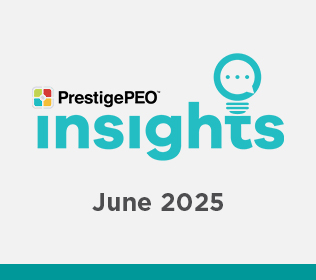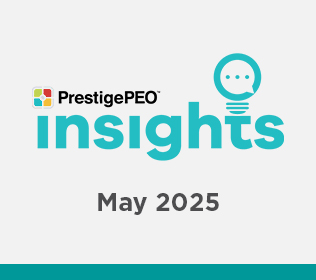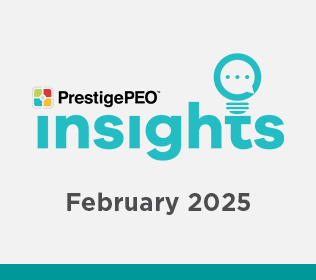
The latest news relevant to you and your business
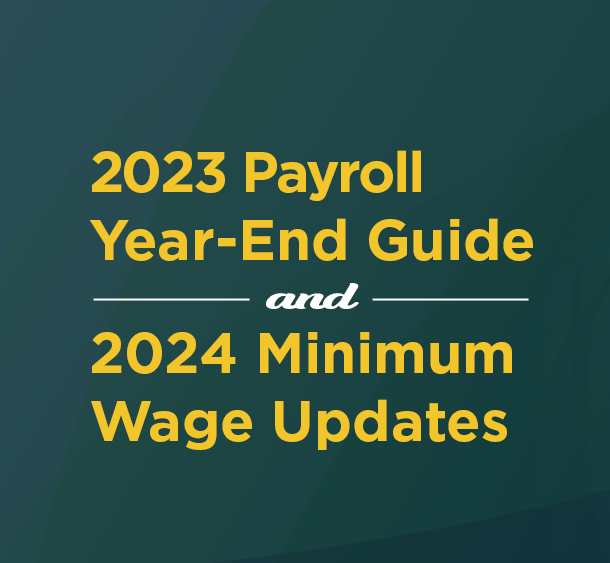
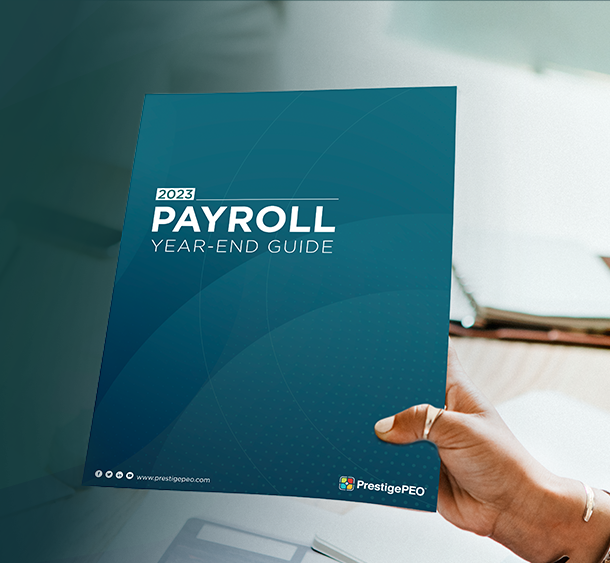
The end of the year is fast approaching! It’s time to prepare to close your books for the year. To help you through this process, reference our 2023 Payroll Guide for important end-of-year payroll deadlines and deliverables. Additionally, please find our yearly guide on 2024 minimum wage increases. Find guides to both topics linked below.
FSA, DCA, and HSA accounts are pre-tax benefits allowing employees to set aside dedicated funds for reimbursement for out-of-pocket medical expenses while reducing employee taxes. FSA is available to all employees who choose to enroll.
There are a few caveats that you and your employees need to know:
- To participate in a 2024 FSA plan, regardless of whether an employee is a current 2023 FSA participant, all employees MUST enroll or re-enroll in a new plan.
- The IRS has announced that the 2024 maximum FSA contribution limit is $3,200. Please be sure to inform your employees of this maximum contribution limit.
- FSA, DCA, and HSA selections should have been made in your PrestigePRO Employee Benefits Portal during the open enrollment period. If you or your employees need to make adjustments and your open enrollment window has closed, you can contact your Benefits Specialist for any changes. The deadline to enroll or re-enroll for a 2024 FSA plan is Dec 31, 2023.
- Money placed in FSAs is use-it-or-lose-it; however, for 2023 FSA participants, $610 of unused funds can be rolled over into 2024.
Startlingly, employees lose around $3 billion per year in unused FSA money, so now is also an appropriate time to encourage your employees to use their 2023 FSA money by the end of the year or carry it over into the next. For employees who enroll or re-enroll in a 2024 FSA, $640 of unused funds can be rolled over into 2025. The same re-enrollment rules will apply.

PrestigePEO sends our Pulse Newsletter to your employees each December. Should you not want them to receive Pulse, please click the Opt-Out below. The Pulse Newsletter contains information about W-2s, FSA benefits, and our PrestigeGO mobile app.
Please fill out the opt-out form no later than Friday, December 8, 2023.
HR CORNER
Comprehensive Online Training at Your Fingertips: BLR!
Are your employees interested in continuing development to further their careers? Do you need to administer safety or sexual harassment training? As a client of PrestigePEO, you have access to BLR’s library of training courses! BLR is a service that provides online training courses on topics such as management training, safety training, legal requirements, and human resources. Your HRBP will be happy to walk you through how to take advantage of BLR!

COMPLIANCE
Reminder: 2022 EEO-1 Component 1 Data Collection is Due
As mentioned in our September 2023 Insights Newsletter, the 2022 EEO-1 Component 1 Data Report must be certified by December 5, 2023. The data collection portal is now open, and PrestigePEO is in the process of contacting our clients who are required to file the EEO-1 Report. Any EEO-1 data we have requested should already be submitted to PrestigePEO. If you have not submitted your data, please do so to provide PrestigePEO sufficient time to finalize reports and coordinate your client certification by the December 5, 2023, deadline. If you have not been contacted and you believe that your business is required to file the EEO-1 Report, please reach out to your HR Business Partner.
Important Compliance Alerts
In an effort to keep you informed about compliance updates that may affect your business, we have compiled this list of alerts. Some of these alerts are only applicable to clients with businesses or employees in certain states, and the alert will reflect that. Please read below for more information.
California Expands Paid Sick Leave Law
Effective January 1, 2024, California is expanding Paid Sick Leave time available to employees working in California.
Annual Amount of Paid Sick Leave
Under either an accrual method or frontload method, employees are entitled to 40 hours or 5 days of Paid Sick Leave annually. Employees are also able to carry over 40 hours or 5 days of Paid Sick Leave each year as well. Employers are still allowed to limit an employee’s annual use of Paid Sick Leave exceeding 40 hours or 5 business days.
Accrual Method
Employers can continue to have Paid Sick Leave accrue at a rate of one hour for every thirty hours worked. For employers who elect a different accrual rate, employees must accrue at least 24 hours of Paid Sick Leave by their 120th day of work and must accrue forty hours of Paid Sick Leave by their 200th day of work. Additionally, employers may choose to cap Paid Sick Leave accrual at 80 hours or 10 days.
What are Next Steps?
- Review your company’s paid sick leave policies and make updates if and when necessary.
- Provide education to the individual(s) handling Paid Sick Leave requests relating to the Paid Sick Leave law changes.
PrestigePEO is here to help.
PrestigePEO is focused on supporting your business. If you have any questions regarding California’s Paid Sick Leave law changes or updating your existing leave policies, please reach out to your HR Business Partner.
California – Updates to Non-Compete Laws
Senate Bill (SB) 699
Effective January 1, 2024, Senate Bill (SB) 699 prohibits employers from either entering into or attempting to enforce non-compete agreements that are void under California state law, regardless of when the agreement was entered into, where the employee who signed it worked, and/or where the non-compete agreement was signed. Employees are now able to seek damages, injunctive relief, and reasonable attorney’s fees when bringing action against employers attempting to enforce unlawful non-compete agreements.
Example: A company in California wants to hire an employee to work in California. The employee previously lived and worked in a state that allows non-compete agreements. The employee and their previous employer, a competitor of the California company, entered into a non-compete agreement that is valid under the other state’s laws. The California company moves forward with hiring the employee. The out-of-state employer then seeks to enforce the non-compete agreement previously signed by the employee and the out-of-state company to prevent the individual from being able to take the job in California. The employee can now prevent enforcement of the non-compete if the non-compete agreement is void/invalid under California law (even though it is valid in a different state).
Assembly Bill (AB) 1076
Effective January 1, 2024, Assembly Bill (AB) 1076 also becomes effective. While Assembly Bill (AB) 1076 appears to be a new law, it is simply codifying existing caselaw in California and is related to the 2008 California Supreme Court Case Edwards v. Arthur Anderssen, LLP – where the Court determined that even if a non-compete agreement is narrowly tailored and does not completely prohibit a former employee from seeking a job in the same industry, it still violates California state law unless it falls within one of the specific exceptions outlined within the law.
Notice Requirement
AB 1067 imposes a notice requirement upon employers to notify current and former employees, by February 14, 2024, who have unlawful non-compete clauses in their contracts or who had signed an unlawful non-compete agreement that those clauses or agreements are void. This law applies to current or former employees who were or are employed from January 1, 2022, to present.
For former employees, notice may be sent to the former employee’s last known address and email address and should include a representation by the employer that the company will not attempt to enforce what would be considered an unenforceable non-compete clause/agreement under California state law.
What should Employers do Now?
- Notify current and former employees pursuant to the Notice Requirement; and
- Review California employment contracts for unlawful non-compete clauses and amend if and where necessary.
PrestigePEO is here to help.
PrestigePEO is focused on supporting your business. If you have any questions regarding California’s non-compete laws, please reach out to your HR Business Partner.
California – Reproductive Loss Leave
Effective January 1, 2024, private employers with 5 or more employees must provide protected time off to their California employees for a reproductive loss event. Those eligible employees are entitled to receive up to 5 days of protected time off. For the purposes of this law, an employee is defined as an individual having been employed by the employer for at least 30 days.
What is a Reproductive Loss Event?
Reproductive Loss Event is broadly defined for the purpose of this law. It includes miscarriage, stillbirth, failed surrogacy, failed adoption, or unsuccessful assisted reproduction, encompassing those employees who, had such a loss not occurred, would be recognized as a parent.
When & How Can the Leave Be Taken?
An employee does not need to take the 5 days of entitled leave consecutively, but should they choose to take the leave, it must be taken within 3 months of the reproductive loss event. If an employee suffers more than one reproductive loss event within a 12-month period, an employer is only required to provide up to 20 days of protected leave.
Additionally, eligible employees are NOT required to provide supporting documentation in support of their request for Reproductive Loss Leave.
Employer Responsibilities
- Employee Pay while on Leave – If the employer does not have an existing leave policy, the 5 days may be unpaid. However, an employee is entitled to use varying types of PTO (vacation days, personal leave, sick time, and/or compensatory time off) available to the employee.
- Employer Confidentiality – The law requires an employer to maintain the employee’s confidentiality of employees requesting reproductive loss leave. Any information shared by an employee when requesting reproductive loss leave should only be shared on an as-needed basis with appropriate internal personnel or counsel.
Next Steps
- Review internal company policies, including employee handbooks, to determine if your company already provides for reproductive loss leave.
- Provide education to the individual(s) handling leave of absence requests relating to the new California law and the Employer Responsibilities.
PrestigePEO is here to help.
PrestigePEO is focused on supporting your business. If you have any questions regarding California’s Reproductive Loss Leave or updating your existing leave policies, please reach out to your HR Business Partner.
State Posting Notice Update for WA and NE
The following mandatory posting updates have recently been announced. If you have offices in the states mentioned below, you will be receiving updated posters shortly. Please post in a common area and remove any old posters. If your business address changes, promptly contact your HR Business Partner to ensure your business receives the latest posters.
WA – Paid Family Medical Leave Weekly Benefit – State Poster updated to reflect increase in weekly benefit from $1,427 to $1,456.
NE – Paid Family Medical Leave Weekly Benefit – State Poster updated to reflect increase in weekly benefit from $1,427 to $1,456.
Federal Court New York Pay Equity Ruling
The New York Achieve Pay Equity Act (APEA) was passed in 2016, and in 2019, it expanded the legal protections of employees in New York for pay equity. Before the APEA, New York employers had to follow only the federal Equal Pay Act (EPA), which protected against pay disparity based on gender. The APEA expanded protections to New York employees by covering all protected classes under New York’s Human Rights Law.
On October 17, 2023, the Second Circuit Court of Appeals issued a decision in Eisenhauer v. Culinary Institute of America, which reminds New York employers of their higher obligations under the APEA. The plaintiff in this case brought causes of action under the federal EPA and the APEA. The Court determined that the defendant must only show under the EPA that a pay disparity resulted from a differential based on any factor other than sex. However, the Court reminded New York employers that they have limited reasons under the APEA to justify paying individuals different pay for performing the same or substantially similar work. New York employers must show that they had a bona fide factor other than status within one or more protected class or classes that is job-related to assert a defense that the pay differential is not a violation of the APEA.
What does this decision mean?
While the Eisenhauer ruling is good for employers on the federal level, as it makes it easier to defend against equal pay claims brought under the EPA, it reminds New York employers that, in New York, the bona fide reason for any pay differential for the same or similar jobs must be job-related.
What should New York employers do?
New York employers should review their employees’ pay to determine if any of their employees who are doing the same or similar job duties are receiving different compensation. If they are, the employer should review the reasons for the pay differential to ensure that they reflect legitimate business reasons and are related to the individual’s job. New York employers should also keep in mind that the APEA protects all covered protected classes under the New York Human Rights Act, and not just gender.
PrestigePEO is here to help.
If you have questions regarding the APEA or this ruling, do not hesitate to contact your HR Business Partner.
New York – Notice of Eligibility for Unemployment
On September 14, 2023, New York State Governor Hochul signed into law a bill to amend Section 590 of New York Labor Law, specifically expanding an employer’s obligation to inform employees of their right to apply for unemployment benefits with the NYS Department of Labor. Written notification will be required for any employee whose employment has been terminated or whose scheduled working hours have been reduced. This law was effective November 13, 2023.
Employer Requirements as of November 13, 2023:
- Provide written notice of eligibility for unemployment benefits to employees whose employment has been terminated or whose scheduled working hours have been reduced.
- The notice must be provided no more than five working days after the termination date or reduction of their working hours, and in the same five-working-day period.
- The notice is required to include:
- the exact date of termination or reduction in hours;
- the exact date of cancellation of employee benefits connected with such termination or reduction in hours;
- the employer’s name and registration number;
- the address of the employer to which a request for remuneration and employment information with respect to such employee must be directed; and
- any other information that may be required by the NYDOL Commissioner.
PrestigePEO has updated its termination letters to reflect this required information. However, please note it is the worksite employer’s responsibility to timely advise PrestigePEO of termination and to let us know if notice is needed due to a reduction in an employee’s hours.
PrestigePEO is here to help.
PrestigePEO is focused on supporting your business. If you have any questions regarding New York’s Notice of Eligibility for Unemployment, additional regulations, or any other workplace policies, please reach out to your HR Business Partner.
Hawaii Pay Transparency Law Effective January 1, 2024
Hawaii’s new pay transparency law is slated to go into effect on January 1, 2024. It will require employers with 50 or more employees to disclose hourly or salary ranges on job listings. The new law prohibits discriminating against employees based on their protected classes regarding their pay.
Hawaii joins several states that have enacted pay transparency laws over the last few years, including New York, California, Colorado, Connecticut, Maryland, Nevada, Rhode Island, and Washington.
PrestigePEO is here to help.
If you have any questions regarding Hawaii’s Pay Transparency law or pay transparency laws in other states, do not hesitate to contact your HR Business Partner.
Massachusetts PFML Updates: January 1, 2024 – Contribution Rate Increase
Effective January 1, 2024, Massachusetts PFML Contribution Rates will increase, and the increased percentage is dependent upon employer size. The weekly benefit maximum will also increase to $1,144.90 for eligible employees.
Employers with 25 or More Employees
The total PFML Contribution Rate will increase to 0.88%.
- The contribution may be split between employee wage withholdings and employer contributions:
- Medical Leave
- Total Contribution: 0.70% of eligible wages
- Employer Contribution Share: 0.42% of eligible wages
- Employee Contribution Share: 0.28% of eligible wages
- Family Leave:
- Total Contribution: 0.18% of eligible wages
- Employer Contribution Share: 0.00% of eligible wages
- Employee Contribution Share: 0.18% of eligible wages
- Medical Leave
Employers with less than 25 Employees
The total PFML Contribution Rate will increase to 0.46%.
- Employers are not required to pay the employer share of the medical leave contribution but may elect to cover some or all of the employees’ share:
- Medical Leave
- Total Contribution: 0.28% of eligible wages
- Employer Contribution Share: 0.00% of eligible wages
- Employee Contribution Share: 0.28% of eligible wages
- Family Leave:
- Total Contribution: 0.18% of eligible wages
- Employer Contribution Share: 0.00% of eligible wages
- Employee Contribution Share: 0.18% of eligible wages
- Medical Leave
Employers with a Private/Self-Insured Plan
Employers with a private or self-insured plan that has been approved by the Department of Family and Medical Leave (DFML) are not required to make PFML contributions to the Commonwealth but will need to adjust such private or self-insured plans to reflect the new maximum benefit amounts and contribution rates.
What Do Employers Need to Do?
- Employers must provide employees notice of the contribution rate increases. A posting notice provided by the DFML can be found here.
- If you have a PFML policy, it should be updated to reflect these changes. If you need assistance updating your policy, please reach out to your HRBP if you need assistance.
PrestigePEO is here to help.
If you have any questions regarding the increased PFML Contribution Rates for 2024, or need help updating your PFML policy, do not hesitate to reach out to your HR Business Partner.
NLRB Joint Employer Rule Released
On October 27, 2023, the National Labor Relations Board (the ”Board”) published a final rule setting new standards for determination of joint employers status for businesses (the “Rule”). Titled “Standard for Determining Joint Employer Status,” the Rule establishes that, under the National Labor Relations Act, two or more entities may be considered joint employers of a group of employees if each entity has an employment relationship with the employees, and if the entities share or codetermine one or more of the employee’s essential terms and conditions of employment. [1]
The Rule rescinds a prior final rule, which had been in effect since April 27, 2020.[2] In contrast to the Board’s 2020 decision which required a finding of “substantial direct and immediate control” over material terms or conditions of employment, the Rule will now allow the NLRB to consider evidence of reserved control or indirect control over any one of seven enumerated terms, the “essential terms” of employment, when determining if a joint-employer relationship exists.
These essential terms and conditions of employment under the Rule are:
- wages, benefits, and other compensation;
- hours of work and scheduling;
- the assignment of duties to be performed;
- the supervision of the performance of duties;
- work rules and directions governing the manner, means, and methods of the performance of duties and the grounds for discipline;
- the tenure of employment, including hiring and discharge; and
- working conditions related to the safety and health of employees.[3]
Joint employer status can subject businesses so classified to joint and several liability for violations of labor and employment law and regulations committed by their fellow joint employers. Additionally, for collective bargaining purposes, the regulatory scheme propagated by the Rule mandates that a joint employer, by virtue of its indirect or reserved control over one or more essential terms and conditions of employment, will be required to bargain over those essential terms and conditions with the employee and their union.
The Rule also poses significant ramifications for franchisors and their franchisees, as workers in this business space will have greater latitude to assert claims against both the franchisor and franchisee, even if only one of the two has direct control over the essential terms and conditions of the worker’s employment.
The Board has stated that this new Rule correctly upholds the law; however, many business owners believe the new Rule makes joint employment more difficult to navigate.
If you are concerned your business may be a joint employer with a franchise partner or other business entity, you should consult with your legal counsel regarding your risks.
PrestigePEO is here to help.
If you have any questions about the new rule, please reach out to your HR Business Partner. The NLRB has also released a fact sheet about the new rule, which can be found here.
[1] Standard for Determining Joint Employer Status, 88 Fed. Reg. 73946 (October 27, 2023) (to be codified at 29 C.F.R. 103).
[2] Joint Employer Status Under the National Labor Relations Act, 85 FR 11184 (February 26, 2020) (codified at 29 C.F.R. 103).
[3] Standard for Determining Joint Employer Status, 88 Fed. Reg. 73946 (October 27, 2023) (to be codified at 29 C.F.R. 103).
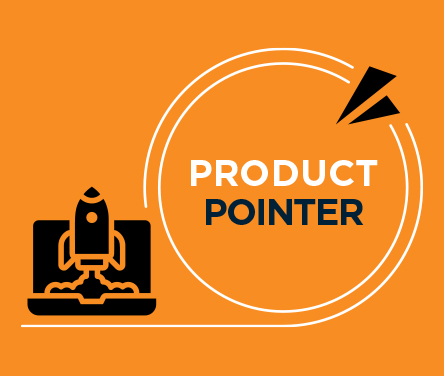
PRODUCT CORNER
Streamline Your Hiring Process with JazzHR
If you’re searching for a system to improve and personalize your hiring process, look no further. JazzHR is an easy–to–use and powerful applicant tracking platform. With this tool, you can easily post jobs, manage applicants, interview and assess candidate skills, present offers, and request eSignatures. Click on the button below to request a demo or contact your HR Business Partner for additional information.
Offer Your Employees Protection with LifeLock
As our world becomes increasingly digital, it’s more important than ever to make sure that your identity is safe. Scammers are extremely sophisticated, and preventing cyber-attacks without help from an expert can be difficult. In our roster of employee benefits, we are proud to offer LifeLock! It’s simple to enroll, affordable, and the protection for your identity is round the clock. Click the button below and reach out to your Benefits Specialist to learn more.
Feedback
If you have an idea for a future newsletter, we’d love to hear from you! Additionally, if you’d like more information on our services or programs, we can certainly accommodate that as well. Email marketingteam@prestigepeo.com today!

